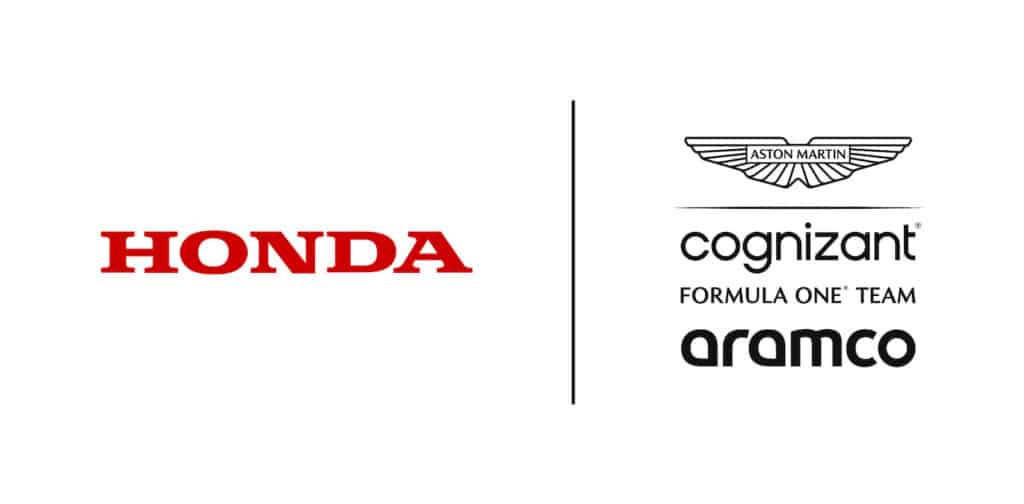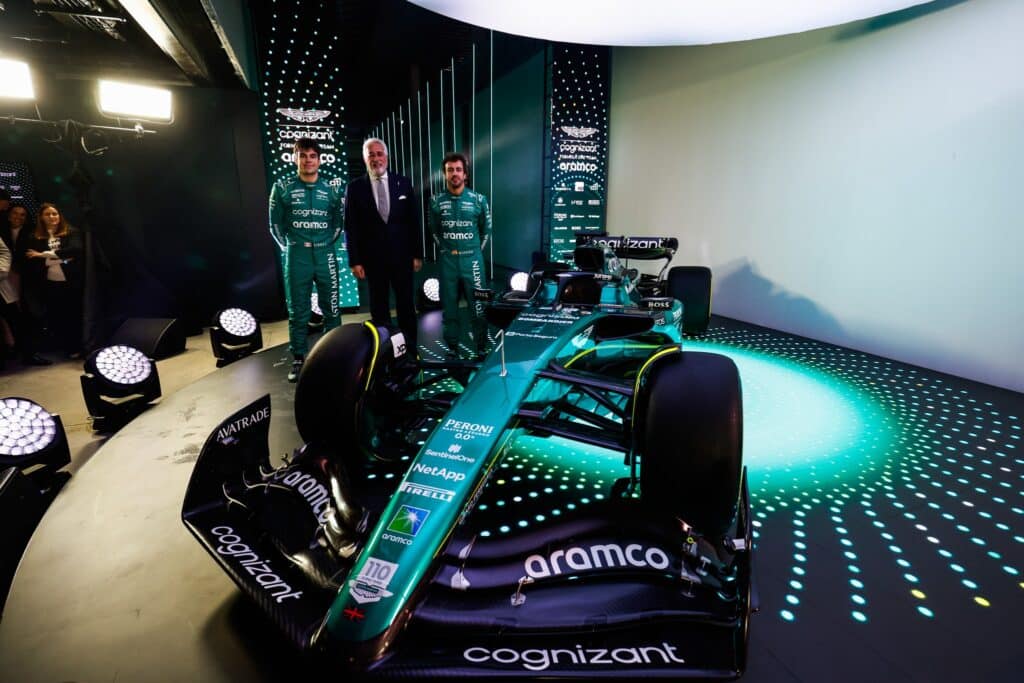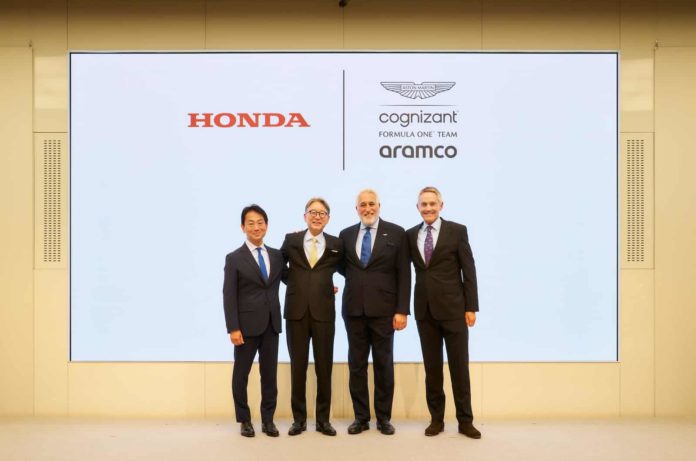Honda Motor Co. plans to participate in the FIA Formula One World Championship beginning with the 2026 season as an engine — now properly called a “power unit” — supplier to Aston Martin.
The Japanese automaker agreed to partner with the Aston Martin Aramco Cognizant Formula One Team to supply power units compliant with the new F1 regulations that take effect in the 2026 season. The team will be known as Aston Martin Aramco Honda.
“I would like to welcome Honda and HRC to the Aston Martin Aramco Cognizant Formula One Team, said Lawrence Stroll, executive chairman of the team. “We share a mutual drive, determination, and relentless ambition to succeed on track.”
Honda’s history in F1
Honda has participated in Formula One off and on since 1964, when the company fielded an “all Honda” team. The Japanese team won the Mexican Grand Prix in 1965. Then in the 1980s, Honda returned to F1 as an engine manufacturer, winning the Constructor’s Championship with Williams Honda in 1986, and both the Driver’s and Constructor’s titles in 1987 with Williams, and then four straight Driver and Constructor titles with McLaren from 1988 to 1991.
The company returned to F1 in the 21st century supplying engines to BAR Honda from 2000 to 2005, then fielded a factory team from 2006-2008. From 2015 to 2017, Honda supplied engines to McLaren. In 2108 Honda began supplying power units to Alpha Tauri, and in 2019 added the Red Bull team, winning the driver’s championship with Max Verstappen in 2021 and providing technical support to Red Bull as the team won the 2022 Driver and Constructor titles.

F1 commits to increased hybridization
The new power unit created by Honda will be a hybrid engine and electric motor, with a maximum power output ratio of 50/50. This will represent a significant increase in the deployment of electrical power compared to the current ratio of about 20% of the F1 car’s 1,000 horsepower. F1 will also be transitioning to 100% sustainable fuel, while today the fuel is 10% ethanol.
Specifically, the 2026 regulations require a reduction of engine output while tripling the output of the energy recovery system, or regen as it’s known in street cars. This system converts kinetic energy, under certain situations such as braking, into electrical energy. This will result in maximum power output that is roughly even between the engine and motor.
These changes in F1 power unit regulations are consistent with the direction Honda has been taking in its general engine development. Working to the F1 regulations should have profound significance in terms of creating important opportunities to pursue the development of future technologies, the company noted.
The Honda Racing Corp., which has become responsible for both auto and motorcycle motorsports activities since 2022, will assume responsibility for the development of power units, race participation and the management for F1 racing as well.

“One of the key reasons for our decision to take up the new challenge in F1 is that the world’s pinnacle form of racing is striving to become a sustainable racing series,” said Toshihiro Mibe, global CEO of Honda, “which is in line with the direction Honda is aiming toward carbon neutrality, and it will become a platform which will facilitate the development of our electrification technologies.”
A partnership to win
With the new 2026 regulations, the recipe for a winning car will be a compact, lightweight, and high-power electric motor with a high-performance battery capable of handling high and swift power output, as well as energy management technology.
“We believe that the technologies and know-how gained from this new challenge can potentially be applied directly to our future mass production electric vehicles,” Mibe said, “such as an electric flagship sports model, and electrification technologies in various areas, including eVTOL (Electric Vertical Takeoff and Landing aircraft) which is currently under research and development.”
For its part, the Aston Martin team is leaving behind the Mercedes-AMG power plant they have been using to make the switch to Honda.
“I would like to pay tribute to our current power unit supplier who we will continue to partner with for the next few seasons,” said Martin Whitmarsh, group CEO of Aston Martin Performance Technologies. “Our future works partnership with Honda is one of the last parts of the jigsaw puzzle slotting into place for Aston Martin’s ambitious plans in Formula One.”

